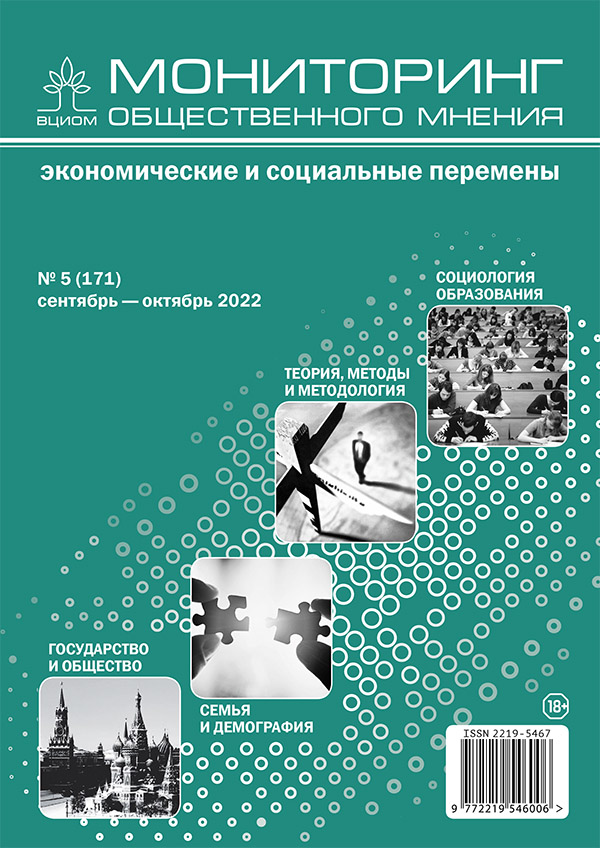Communicative Capacity of Russian NGOs' Websites: Evidence from Non-Reactive Data Analysis
DOI:
https://doi.org/10.14515/monitoring.2022.5.2230Keywords:
communication, communicative capacity, non-profit organizations, non-reactive data, web sites, web scraping, non-governmental organizations, NGOAbstract
The paper pilots a new approach to measuring the communicative capacity of non-profit organizations’ (NGOs) websites. The analysis relies on technical data of nearly 10,000 Russian NGOs websites collected non-reactively using web scraping. The communicative capacity is measured following Michael L. Kent and Maureen Taylor’s model, according to which a site should have a simple interface, provide useful information, retain and return users.
The results show that the websites of Russian NGOs have a low communication capacity. Search engine optimization is the prevalent principle: 82% of websites apply it in practice. Around 50% of NGO organizations adhere to other principles: the simplicity of interface, the utility of information for donors and volunteers, and stimulation of retention. Non-profit organizations, charitable foundations, and younger organizations exhibit the greater communication capacity. The study also detected that the results obtained using non-reactive data differ significantly from the results of previous studies based on survey data and reflecting the position of representatives of the NGOs themselves.
Acknowledgments. We would like to thank Denis Yagodin and Alexey Sidorenko (Teplitsa. Technologies for Social Good) for their valuable comments and participation in discussions that helped to make this paper better.
Downloads
Published
How to Cite
Issue
Section
License
Copyright (c) 2022 Monitoring of Public Opinion: Economic and Social Changes Journal (Public Opinion Monitoring) ISSN 2219-5467

This work is licensed under a Creative Commons Attribution-NonCommercial-ShareAlike 4.0 International License.






